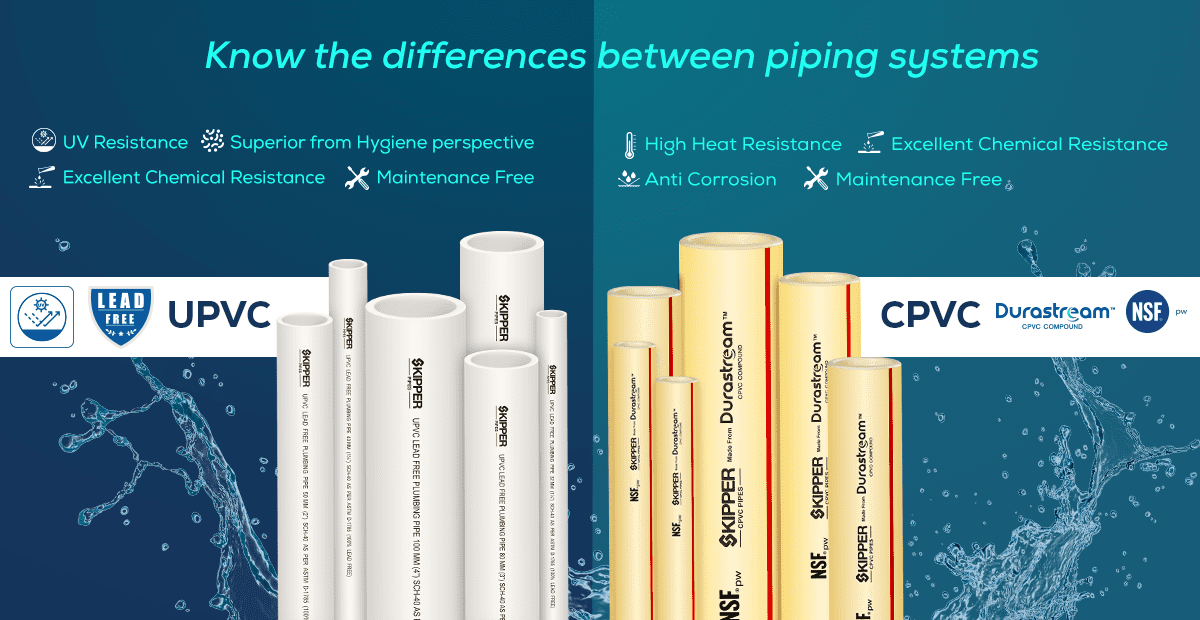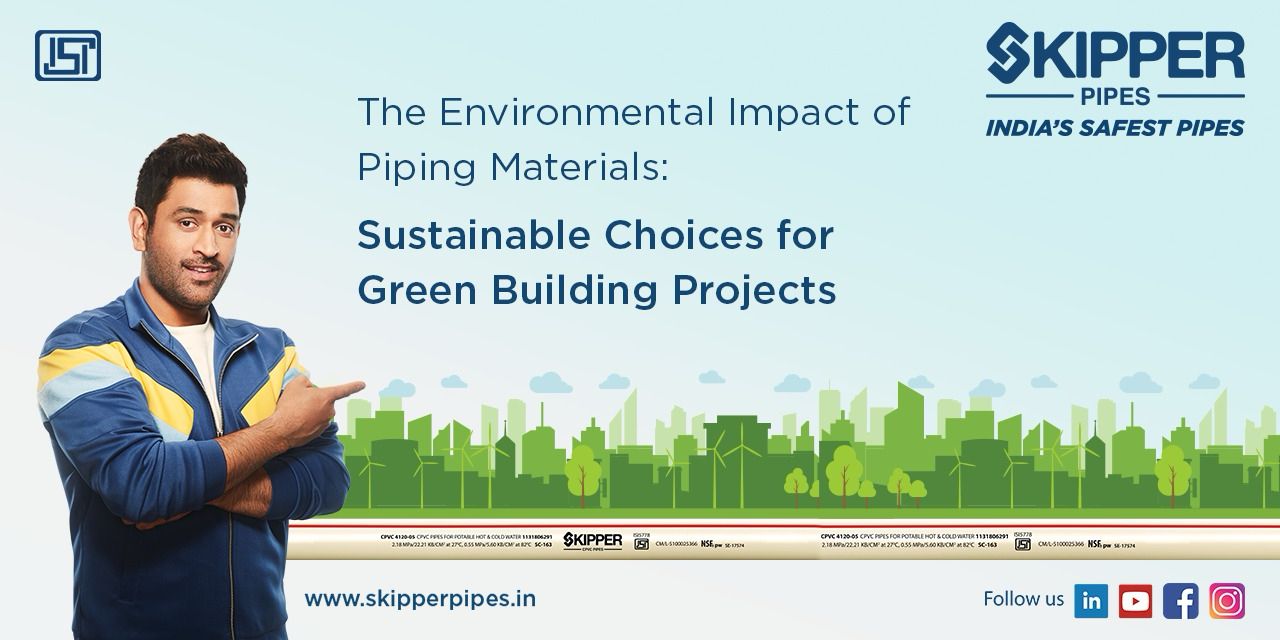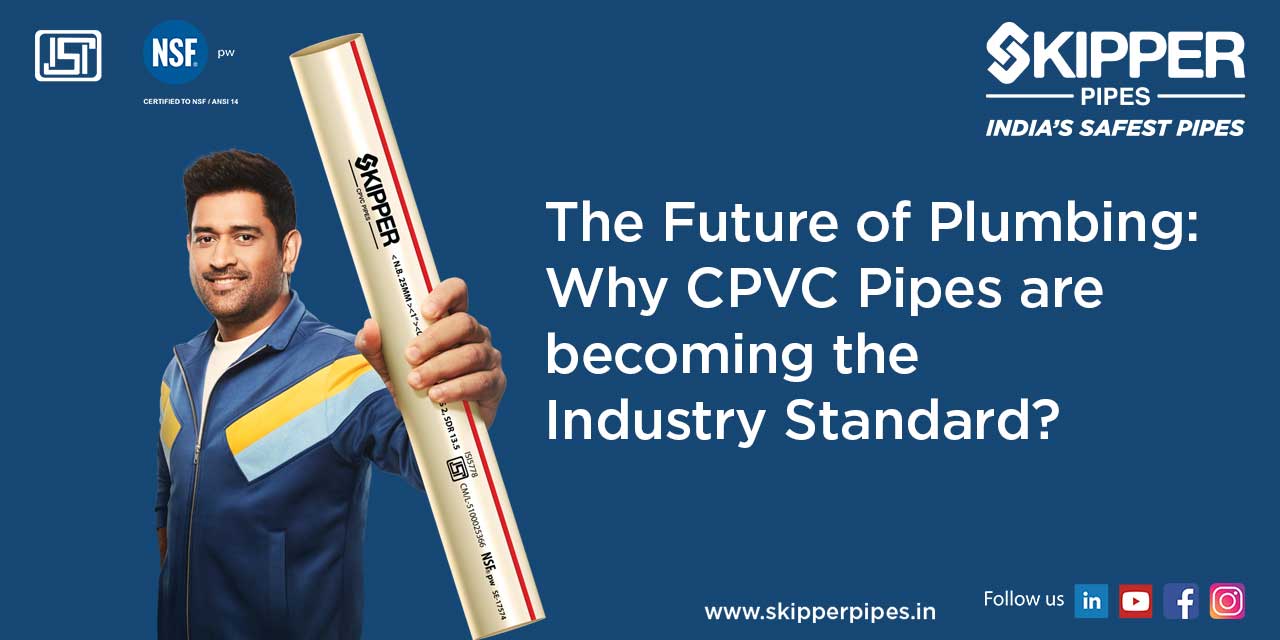The market for polyvinyl chloride (PVC) pipes in India is growing exponentially. By 2023, the value of this sector is expected to soar beyond $6220 million – with the CAGR for the 2016-2023 periods hovering around the 10.3% mark. Chlorinated PVC pipe (CPVC pipe) and unplasticised PVC pipe (UPVC pipe) are two highly popular varieties of PVC pipes and fittings. Here, we will take look at the most important differences between UPVC pipes and CPVC pipes:
Raw Material
Unplasticized polyvinyl chloride (UPVC) is a solid, versatile material that is resistant to a large number of chemicals. UPVC is a tough, sinewy, transparent, and hard-wearing material, but it is very resistant to the influence of the atmosphere, moisture, and chemicals, has excellent electrical properties, and low flammability. Pipes and fittings made of UPVC are suitable for installation in and out of the soil. Chlorinated polyvinyl chloride (CPVC) is a thermoplastic made by chlorinating the polyvinyl chloride resin. It is resistant to degradation and provides a long life span of use. In fact, CPVC is additionally chlorinated PVC. The chlorine bonded to the carbon atoms of the pre-chlorinated PVC contains 65-67% chlorine, which is 7% more than UPVC. Because of the increased chlorine content, it has excellent chemical resistance, primarily to acids, alkalis and salts, and is therefore very suitable as a material in the chemical process industry. The temperature range of application ranges from -40°C to + 95°C. CPVC is an extremely valuable, structurally rigid, and solid plastic material used in industrial media transport applications with a maximum operating temperature of up to 95°C.
Manufacturing Process
The molecule of poly (vinyl chloride) is produced with petroleum or natural gas and salt processing. The chlorine used for the manufacture of PVC is separated from kitchen salt (50% of the weight of PVC is from salts). The string molecular processes of the molecule (NaCl) are divided and Na + and Cl-ions are obtained. These obtained ions of Cl- react with ethylene or acetylene and vinyl chloride monomer is formed. The vinyl chloride monomer is pressurized and placed in a polymerization reactor containing water and catalysts that help in the heated polymerization reaction – the chemical process in which poly (vinyl chloride) is obtained. UPVC is PVC without plasticizers (they are not used in the manufacturing process). CPVC is a thermoplastic product obtained by chlorination of polyvinylchloride.
Mechanical Characteristics
UPVC is a rigid, tough, transparent, hard-wearing material & high strength materials. CPVC is more flexible. The mechanical characteristic at room temperature of CPVC is very similar to those of UPVC. CPVC is also a material that has high mechanical strength. In case of CPVC these characteristics are preserved during higher temperatures.
Chemical Characteristics
The range of UPVC and CPVC piping solutions manufactured by reputed suppliers typically has excellent resistance properties. They are generally not affected in any way by corrosive liquids and/or strong chemicals, salts, acids, and other materials. However, for UPVC pipes, these chemical features remain unaffected only up to a certain temperature (up to (60°C – 65°C), while CPVC pipes retain the features at significantly higher temperatures as well.
Elevated Temperatures withstanding ability
The chlorination process used to manufacture CPVC pipes enables them to withstand both extremely high and extremely low temperatures. Water/Liquids at temperatures over 90°C can flow through these pipes, without causing any damages. UPVC pipes do not have any plasticizer – and hence, are not suitable for the transmission of hot liquids. It is not advisable to use UPVC pipes for the transmission of water at >55°C-60°C.
Drinking-Water Transmission
The recyclability and robust chemical resistance of UPVC pipes are big advantages. So they are commonly used for the transmission of drinking water with greater flexibility (and of course, the lead-free assurance). CPVC pipes are a popular choice for safe and hygienic drinking water transmission as well. UPVC pipes, on the other hand, are also commonly used for drainage piping solutions and other applications where chemical-resistance is of paramount importance.
UV Resistance
Both UPVC pipes and CPVC pipes come with powerful UV-resistance properties. However, the relatively higher rigidity and lower maintenance requirements of UPVC pipes make them more suitable for external applications (when exposed to harsh weather conditions, there is no appreciable wear & tear). Both types of pipes can be easily handled.
Longevity & Service Life
The capacity of CPVC pipe to withstand material degradation (particularly at high temperatures) is considerably higher than that of UPVC pipes. Since risks of chemical and physical damage are much lower, CPVC pipes are expected to last for a longer period of time. The longevity of UPVC pipes is excellent too – and hinges crucially on both the raw material quality, as well as that of the filler elements. The higher rigidity of these pipes exposes them to risks of breakage, if not maintained properly.
Low Price Factor
The top PVC pipe manufacturers generally have a complete range of both chlorinated (CPVC) and unplasticised (UPVC) pipes in their portfolio. In order to deliver maximum value to buyers, these companies offer both varieties of quality-optimized pipes – with enhanced features, durability and customizations – at highly competitive rates. Buyers, hence, do not have to go beyond their budgets to source the UPVC or CPVC pipes they need.
Users have to keep in mind that it is never about whether UPVC pipes are better than CPVC pipes (or vice versa). Each category has its respective advantages – and when sourced from a leading pipes & fittings manufacturer, adds value to different applications. The key lies in understanding the difference between the two varieties, and selecting the one that would meet the underlying requirements in the best possible manner.
Ease of Installation
UPVC and CPVC pipes manufactured by the top suppliers are typically lightweight and can be easily transported from one place to another. Installation is pretty much straightforward too – with the help of UPVC solvent cements and CPVC solvent cements respectively. However, since CPVC pipes have greater flexibility and bendability – they are more commonly used for drinking water transportation.
Applications
While both CPVC and UPVC pipes are used in different applications in commercial and residential buildings, industrial setups and public utilities – there are certain key differences between the overall applicability of the two. For example, CPVC pipes from Skipper Pipes (made with the powerful Dura stream compound) can easily be used in water plants (RO & DM), as well as in solar heater lines. The company’s UPVC pipes, on the other hand, find widespread usage in lifts, gravity irrigation systems, and more such applications.
Unplasticised PVC Vs Chlorinated PVC
| Criterion | Unplasticised PVC | Chlorinated PVC |
| Manufacturing | No Plasticizers used | Chlorination of polyvinylchloride is used |
| Mechanical
Characteristics |
Rigid, tough, transparent & hard-wearing | Same but with higher temperature resistivity |
| Chemical
Characteristics |
Good Chemical resistivity | Same but with higher temperature resistivity |
| Installing
|
Easy and light | Easy, light, and flexible |
| Application | Building, Water supply, Agriculture Drainage, Chemical Processing & Plumbing Application. | Building, Potable Hot & Cold water & Plumbing Application |





0 Comments